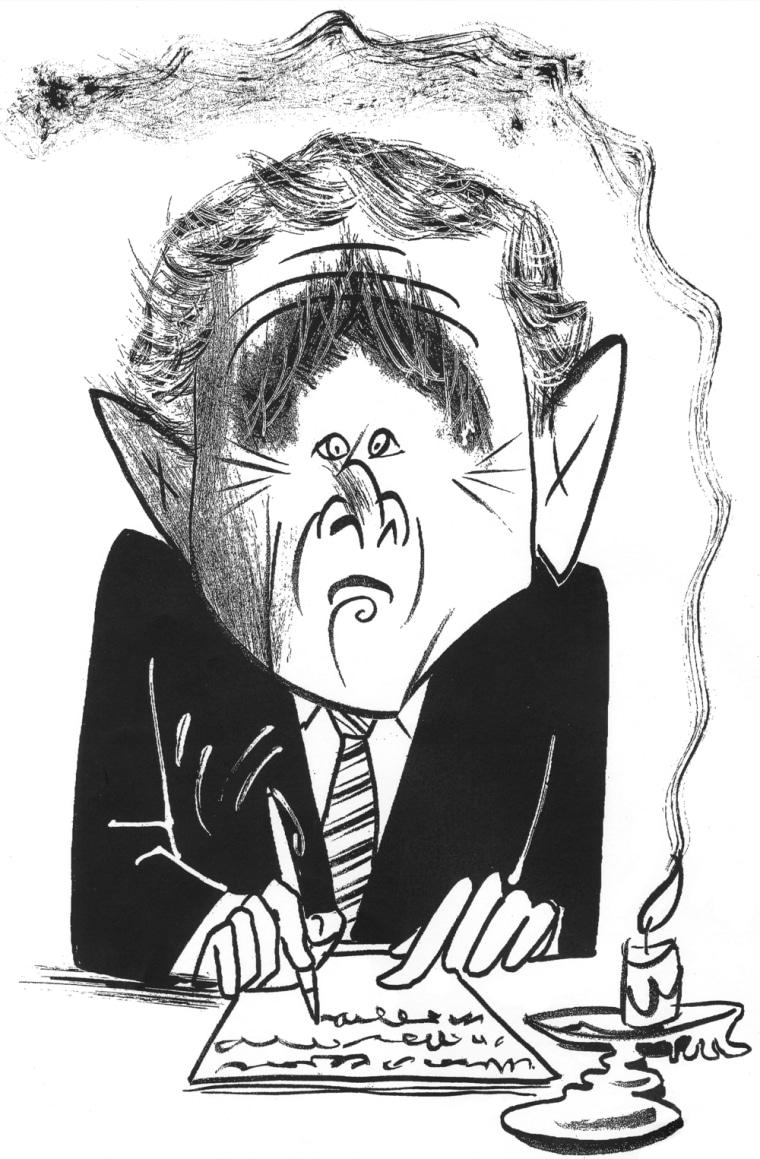When President Jimmy Carter lost his bid for reelection, in November, 1980, he had lots of unfinished business that he did not intend to leave that way. Carter’s Administration spent the next several weeks generating regulations at an unprecedented rate, until, in its last month in office, it published more than ten thousand pages of new rules. These rules, which, like most issued by federal agencies, needed no congressional approval, touched on everything from crash tests for cars to access to medical records, and a phrase was coined to describe them. They became known as “midnight regulations,” after the “midnight judges” appointed by John Adams in the final hours of his Presidency.
Since Jimmy Carter, every President has complained about midnight regulations and, four or eight years later, every President has issued them. On a percentage basis, George Bush senior holds the record: his Administration issued a greater proportion of its rules during the midnight period—generally defined as the last three months in office—than any other President’s. In absolute terms, though, Bill Clinton takes the gold: his Administration, during its midnight phase, published more than twenty-six thousand pages’ worth of rules in the Federal Register. (According to the National Journal, by the time Clinton left office “the journalists who cover the White House had thrown up their hands at the prospect of keeping up.”) President George W. Bush used the timing of these regulations as a rationale for suspending many of them. “I told people pretty plainly that I was going to review all the last-minute decisions that my predecessor had made, and that is exactly what we’re doing,” he declared.
Now, of course, Bush has entered into his own midnight period, and it promises to be a dark time indeed. Among the many new regulations—or, rather, deregulations—the Administration has proposed are rules that would: make it harder for the government to limit workers’ exposure to toxins, eliminate environmental review from decisions affecting fisheries, and ease restrictions on companies that blow up mountains to get at the coal underneath them. Other midnight regulations in the works include rules to allow “factory farms” to ignore the Clean Water Act, rules making it tougher for employees to take family or medical leave, and rules that would effectively gut the Endangered Species Act. Most regulations are subject to public input; such is the sense of urgency that the Administration has brought to the task of despoliation that the Interior Department completed its “review” of two hundred thousand public comments on the endangered-species rules in just four days, a feat that, one congressional aide calculated, required each staff member involved to read through comments at the rate of seven per minute. “So little time, so much damage” is how the Times recently put it.
Why do Presidents wait till the last moment to push through changes they’ve had the power to impose all along? Legal scholars have advanced a variety of explanations; these range from megalomania (each Administration tries to extend its influence into the next) to simple distraction (federal agencies, like ninth graders, have a hard time focussing until they’re up against a deadline). Under the best of circumstances, experts point out, rule-making is a laborious process; many of the regulations published toward the end of the Clinton Administration—such as a rule limiting the amount of arsenic allowed in public drinking water—had been the subject of years’ worth of hearings and scientific review.
But none of these explanations is adequate to the current situation. What distinguishes this Administration in its final days—as in its earlier ones—is the purity of its cynicism. White House officials haven’t even bothered to argue that these new rules are in the public interest. Such a claim would, in any event, be impossible to defend, as just about every midnight regulation being proposed is, evidently, a gift to a favored industry.
Consider, for example, the case of New Source Review. Utility companies have always hated this provision of the Clean Air Act, which requires them to install up-to-date pollution controls when they build new plants or renovate old ones. A new rule being circulated would take a trick that the power company Duke Energy dreamed up for circumventing New Source Review and turn it into law. According to the Administration’s own estimates, this new anti-rule would allow an additional seventy million tons of CO2 to be released into the atmosphere each year. “If you thought the first hundred days of the Bush Administration were bad, just wait and see what the last hundred could bring,” Representative Edward Markey, of Massachusetts, has warned.
Democratic leaders in the House and the Senate have already indicated that they will try to rescind the most egregious of Bush’s midnight regulations. There are a few ways to do this, all of them difficult. Under an obscure law passed in 1996, Congress has the power to revoke recently imposed rules. That law, though, has been used successfully only once. (President Bush, for all his grumbling—and despite Republican control of Congress for much of his tenure—ended up implementing more than three-quarters of the midnight rules that Clinton had left him, including the one on arsenic, just as they were written.) Alternatively, once in office, Barack Obama could ask his agencies to go through the rule-making process all over again. But, by the time that was finished, a good deal of the damage might already have been done. Once a power plant has been rebuilt, it can’t readily be unrebuilt.
The Bush Administration, probably as a result of its own experience, is now trying to craft rules that are as difficult as possible to reverse. Generally speaking, major federal regulations go into effect sixty days after they are published. On November 20th, it will be sixty days before Bush leaves office. Over at the Federal Register, it’s going to be a busy week.
